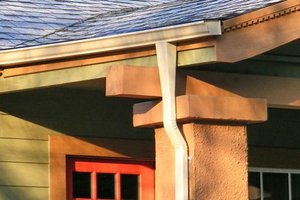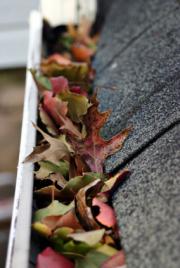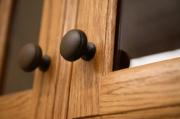Spring Cleaning
Spring has sprung and while we often think of “Spring Cleaning”, it’s important to consider the Exterior of your home. After protecting and keeping you warm during the long winter, your house could use a little massage. Preventative maintenance is crucial to the value of your home. How do you keep the place in Tip-Top Shape? Regular checks and simple maintenance can help you avoid expensive headaches in the future.
Outside The House
Roofs And Gutters
Brutal winter temperatures coupled with ice, snow and winds can wreak havoc on your roof. You may want to call a contractor if you haven’t inspected your roof in several years. Give it a good once over noting any lifting or curling areas or missing shingles. Leaks typically occur around an inadequately flashed chimney, skylight, or other opening. They’re easiest to spot in the attic, so look closely in attic at the rafters for water stains. If you find something of concern, contact a professional for evaluation and repair. Examine the siding under roof eaves for water or discoloration, indications that ice dams might have created leaks along the roof edge.
Next, check to see if the gutters are safely attached and haven’t sprung any leaks. Clear gutters of debris and check them for corrosion, joint separation, and loose fasteners. Flush out downspouts and be sure they are directing water away from teh foundation to prevent potential flooding.
Right The Foundation
Inspect the foundation around your house before the spring rains. Look for cracks or imperfections, and seal them or call a contractor if necessary. Hairline cracks in foundation walls might be the result of concrete curing or minor settling and aren’t automatically cause for alarm. Mark them with tape and check them again in a few months. If they’ve worsened, call a structural engineer. If they’re stable, fill them with an epoxy-injection system.
- Fill in holes in siding and foundation walls with expandable foam.
- Check that the ground around the foundation slopes away from the house (about 1 inch per foot).
- Look for pellet-shaped droppings or shed wings from termites.
- Clear the area of leaves, in which rodents can nest.
Also look for low areas in the yard near the foundation that might pool water during a heavy rain. Level these yard depressions by filling them with compacted soil. Tend to any other “ponding” areas around the yard, too, because after a hard rain, standing water can develop. These puddles can be a breeding ground for mosquitoes.
Addtional Structures
Next time you have that craving for BBQ – be sure to take a look at the deck. Look for water stains where the deck ties to the house. Ongoing leakage can lead to wood decay, weakening the deck structure and the house. If you have any doubt about the structure’s integrity – call a pro to check it out!
Rid your deck of moss and mold. Pressure washers are quite effective, while a stiff shop broom and a little elbow grease can go a long way too!
Looking for more spring maintenance tips? Wondering what maintenance items to focus on? Be sure to check our website for more Spring Maintenane Tips or download our sprint

 You don’t need to be an inspector to know that puddles in the basement or a lake on the front lawn are signs of drainage trouble. But not all drainage problems are so obvious. Some can be hard to spot unless you know what to look for. Here’s how the pros read seven of the more subtle signs of potential water damage, and why you’ll save big bucks if you tackle these problems now instead of later.
You don’t need to be an inspector to know that puddles in the basement or a lake on the front lawn are signs of drainage trouble. But not all drainage problems are so obvious. Some can be hard to spot unless you know what to look for. Here’s how the pros read seven of the more subtle signs of potential water damage, and why you’ll save big bucks if you tackle these problems now instead of later. Lubricate locks and hinges: Creaky hinges and sticking locks can spook you at exactly the wrong moment, so make the rounds with a can of WD-40. It’ll clean and lubricate metal mechanisms in one shot.
Lubricate locks and hinges: Creaky hinges and sticking locks can spook you at exactly the wrong moment, so make the rounds with a can of WD-40. It’ll clean and lubricate metal mechanisms in one shot. Quiet kitchen cabinets: Before the Fall is over, your kitchen will soon be bustling with holiday dinners, baking projects, and house guests, so don’t let little annoyances get in the way of big plans. Clean and lubricate drawers and hinges on kitchen cabinets, and replace any catches that no longer catch.
Quiet kitchen cabinets: Before the Fall is over, your kitchen will soon be bustling with holiday dinners, baking projects, and house guests, so don’t let little annoyances get in the way of big plans. Clean and lubricate drawers and hinges on kitchen cabinets, and replace any catches that no longer catch.
